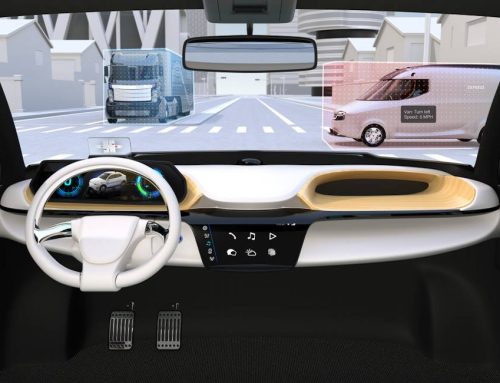Pickup and delivery (P&D) vehicles have a high risk for involvement in crashes and collisions because they drive so many miles, many of them in urban areas where crashes are frequent. Most fleets have an accident rate of about 20 percent, including P&D vehicles. Lane departure warning systems can help lower that number.
The U.S Department of Transportation (DOT) reports that crashes caused by lane departures “are among the deadliest collisions,” with almost 13,000 people dying annually in single-vehicle run-off-road, head-on and sideswipe crashes caused when a vehicle left its lane.
The DOT also reports that lane departure warning (LDW) systems are effective. Vehicles with a lane departure system had 18 percent less involvement in crashes and 86 percent less involvement in crashes with fatalities.
For P&D vehicles, it’s a key feature to keep drivers safer and reduce risk of costly crashes for fleets. It’s also becoming a requirement for some of the bigger P&D companies, who want all vehicles to include LDW systems, as well as backup cameras, blind spot detection systems, and forward collision avoidance.
How Lane Departure Warning Systems Work
Distracted driving leads to many abrupt lane departures and, in turn, many accidents. While training can improve driver habits and behaviors, there’s no way to ensure that every driver stays constantly vigilant at all times.
LDW systems do not get sleepy or distracted. They continuously monitor the position of the P&D vehicle in relation to lane markings, giving an alert if a vehicle departs from its driving lane when the turning signal is not in use. That’s because leaving the lane means the driver is either unintentionally drifting out of their lane or they are changing lanes without signaling those around them.
Either situation can lead to serious collisions. An AI-driven LDW system can greatly reduce the chances of that happening.
The Benefits of Lane Departure Warning Systems
A properly used LDW system acts as an early warning system that alerts drivers just as they start to department their lane, giving them a few precious seconds to avoid an incident. Studies have repeatedly shown that just two to three more seconds often give drivers the reaction time they need to avoid a crash.
An LDW system also serves as a reminder to drivers to always signal their intention to change lanes.
A study published in the journal of the International Association of Traffic and Safety Sciences found that LDW could prevent the following worldwide.
- 336,000 road departure crashes per year
- 483,000 crashes and 10,000 fatal crashes per year
- 31% of the fatal single-vehicle crashes
- 6% of fatal truck crashes
That last one is especially of interest to P&D fleets. Managers looking to lower risk and provide the best possible safety measures for their fleet drivers should consider lane departure warning systems as an important step toward reaching their goals.










